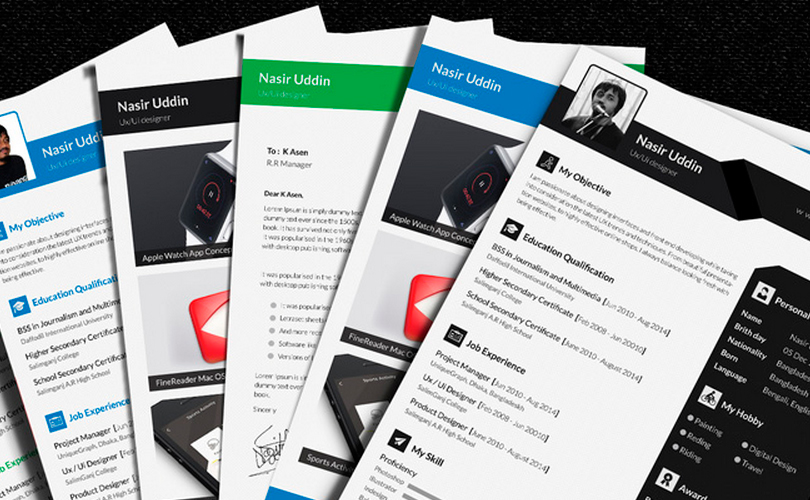As a regular user of the internet and social media, it is likely you would have come across articles with such titles as ‘25 most inventive CVs’ and ‘30 beautiful resumés’. When you open them, you are inundated with images of gorgeously designed CVs that range from resembling a chocolate bar wrapper to an intricately designed map. You wonder if this is the way to go, given the intense competition that exists in the market.
THE QUINTESSENTIAL RECRUITER
But before you redesign your CV, take a minute to gauge the mind of a typical recruiter. The typical recruiter.
* Spends no more than a few minutes on your CV, scanning it for keywords
* Does not hunt for information but expects it to be evident on first glance
* Is put off by the smallest of errors
THE NEED OF THE HOUR
For the typical recruiter, a CV with the following attributes would work best:
* Short and crisp, no more than two pages long
* Clear and legible fonts
* Clutter-free layout
* Error-free text For these characteristics to be incorporated, perhaps your CV does need a makeover, but not the kind you are led to believe.
TOO MANY GRAPHICS SPOIL THE PICTURE
Like most things in life, here too there is a chance for an overkill. Creative CVs are certainly eye-catching but don’t say much about you as a person. At best, they display your ingenuity in art and design. At worst, they reveal that you have way too much free time on your hands.
Saumya Ghildiyal, an HR associate and recruiter advises, “A creative CV is most effective when applying for creative fields like advertising, marketing, education, designing, event management, etc. Also, many top software firms like Google, Twitter, Facebook prefer such CVs where innovation and creativity are of utmost importance.” If your CV shows that you have a flair of design, but you’re applying for a job in say, supply chain management, it indicates to the employer that you are applying for the wrong job.
GIVING YOUR CV A MAKEOVER
If recruiters don’t want to see your Photoshop wizardry, what do they want to see? If you take graphics out of the equation, all that’s left in your CV is the typography. This can be manipulated to your advantage. Choose the right font. For your heading, where you display your name, you can afford to be slightly fancy. You are allowed to break out of the monotony offered by Times New Roman and other similar fonts. For the body, you could be unconventional again and choose another simple, no-nonsense alternative. Perhaps Helvetica or Trebuchet. There is never an appropriate time to use Comic Sans, however.
Use section breaks. You don’t want your CV to seem like one long spiel or an uninterrupted flow of word vomit. Simple line breaks look neat and structure your paragraphs. Additionally, aim for contrasts between section titles and body – either through fonts or formatting.
Maintain consistency. Once you choose a style for your CV, maintain it throughout the document. Don’t use different fonts for different sections. Decide on one font each for heading, sub-heading and body text and stick to it.
Maintain coherence. It’s not only novels that need to have a beginning, a middle and an end, but CVs too. Ghildiyal believes the ideal CV “should start with areas of interest, total years of experience, key skills in which the candidate excels in. It should start from the current job, should mention the designation and duration spent in each job profile, followed by educational qualifications and then personal details.” Your CV must tell the story of your professional life within a logical structure.
Maintain brevity. Ultimately, no one has time for a CV that is longer than two pages, so be very selective of what you want to include.
STILL WANT A CREATIVE CV?
Ruth Weal, Communications Business Partner at Zurich Insurance Company Ltd, uses an infographic CV but also says, “I think of it as an additional marketing tool, not a replacement for my CV. I still upload my Word doc version to the recruitment sites. Where I use my infographic CV is on all social media such as Flickr and Facebook and it’s on my Linkedin profile and my website blog. I send it out in speculative emails to companies and recruiters. I also take it along to interviews. Wherever a recruitment website has the option to upload picture files I put my infographic CV there too.”
Every employer is different. One may appreciate your artistic skills, another may deride it. In short, always have a back-up.
“[Art in a CV] depends upon the industry where you are applying for a job. Little sophisticated design or art won’t hurt. But it should be relevant to the job you are applying for and just about enough to pique a recruiter’s interest in knowing you more. Don’t make the CV too graphic or flashy.”
– Saumya Ghildiyal, HR Associate
Volume 3 Issue 12



























